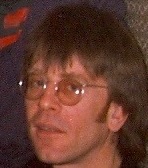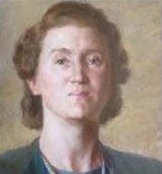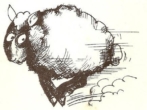One of the crucial elements of the Sheep Worrying years was the early years of complete access to the Bridgwater Arts Centre and that contrasted with the later years where they were trying to get Sheep Worrying out. Times and politics were crucial to this but also people. One highly important figure was Bob Ormrod, the Art Centre Manager at the time that Sheep Worrying first got involved and it is interesting to hear how he himself fought many of the same battles before Sheep Worrying even existed.

Bob says “I was born in Bridgwater in 1946 . In 1960 I had a theatre group with Steve Hunt (county library) ‘the Partisans’. At the time the Art Centre was very elitist- nothing really happening –drama clubs, Bridgwater am dram -Bridgwater film society- so we put on a revue. And then we put on some happenings-foreign films, Czech films . Steve Hunt was a king pin and into everything . He had jazz records, he had a flat in Wembdon road which I went round. The Art Centre had been founded by Gwen Pollard and her mates. She was kind of flamboyant and a bit OTT . I used to help out and serve coffee cos it was somewhere to go cos there was nowhere else to go. I visited her house, a big house at the bottom of Wembdon Hill. She was very tolerant of young people, quite avant garde. I met a party of visiting Russians at her house. Bridgwater in the 60s- there was cafes on every street- Mocca, Embassy, all with juke boxes, and you could stay all day. They were virtual youth clubs. The Other alternative was underage drinking (from 13) -The River Parret and the Cider Houses.

There was the Blake Hall and Town Hall gigs. I used to go to the Merlin Cafe in Taunton – thats on the left side of Vivary Park .Paul Shepherd ran it. They had an EP jukebox- chess EPs , Howling Wolf, Muddy Waters..so I bought a harmonica and then I went off to London for the rest of the ’60s and came back in 1970. When I came back I went in the Art Centre and got a job as caretaker there for £10 a week-1/3 of the average wage-terrible. But nothing much happened there, it was like a little Tory Ideal Homes exhibition – Gwen Pollard owned the building and kept baling it out , so I tried to get people to join so we could take it over. Although I was caretaker I just kept doing more things there -booking, advertising, basically running it. In ’71 I moved into the upstairs flat and basically I was in charge…and inspired by my London experiences to make the Art Centre something crucial—I got all the top acts down.

In 1974 Sedgemoor District Council was set up and took over the Art Centre. I didn’t want it. We were doing fine . The Contemporary Music Network would pay for all the gigs I wanted to put on. Then Thatcher cut it in 79 and it died. One of these top bands was ‘Brotherhood of Breath’ whose album ‘Bremen to Bridgwater’ included tracks recorded February 26th, 1975 at the Bridgwater Arts Centre. In ’76-SDC said I could have an assistant and so I took on Roger Whybrow and then he lived in the upstairs flat. I was the manager till 1980 and we’d put on 60 pro gigs a year + local amateur stuff. The problem was that I was always answerable to a committee –made up of people from the Bridge club and Estate Agents -not people who knew anything about art. The big Problems started with Maggie Rees in 79 -she’d often burst in with a police inspector because of her influence.”

“Really what we just needed was the building, the motivation and the freedom”
That building for everybody concerned was the Art Centre
Bridgwater Arts Centre
On October 10th 1946 the newly created Arts Council of Great Britain opened its first premises in the Georgian splendour of Castle street.
Another of Somersets secret jewels – built in 1723 by James Brydges, first Duke of Chandos, in a style then prevalent in London and which even predated the major 18th Georgian metropolis of Bath, the Art Centre was absolutely critical in making Bridgwater a hub for radical music and set it apart from other similar towns.
For more information about the history of the Bridgwater Arts Centre click here.
But for many years the Art Centre remained a small, exclusive little venue tucked away in the ‘posh’ part of town accessible only to the perceived hi-brow elite. The carnival-loving majority of this working class town naturally threw their creative energies into more popular and down to earth cultural activities.
Bridgwater’s Skiffle and Beat days

How did a small market town like Bridgwater deal with the boom in skiffle and beat music that gave birth elsewhere to the Beatles and the Stones? Local music historian Dave Edney says “Even though the sudden popularity of skiffle might have been responsible for creating a lot of would-be Presley’s there is no evidence whatsoever to suggest that any of them came from my home town. Of course there must have been some individuals within the locality who picked up on the new fad but due to it’s geographical location and size, a town like ours was never going to provide the UK with the “next big thing”. Bridgwater was also a little slow in presenting both skiffle and rock n’roll to it’s wild and willing audience, though in that respect it was also no different to any other town of similar size and stature. By all accounts the first attempts to create a “scene” based around this latest musical fad was a Rock N’Roll club that ran on a weekly basis at the old Rex cinema or “The Bug House” as it was referred to locally. Largely run by word of mouth, it provided the opportunity for local punters to dance to 78’s played on an old wind up gramophone.”
The pop-rock-skiffle-beat generation in Bridgwater kicked off in 1960 with the Top Twenty Club and people should check out Dave Edney’s brilliant TOP TWENTY CLUB history website here.
